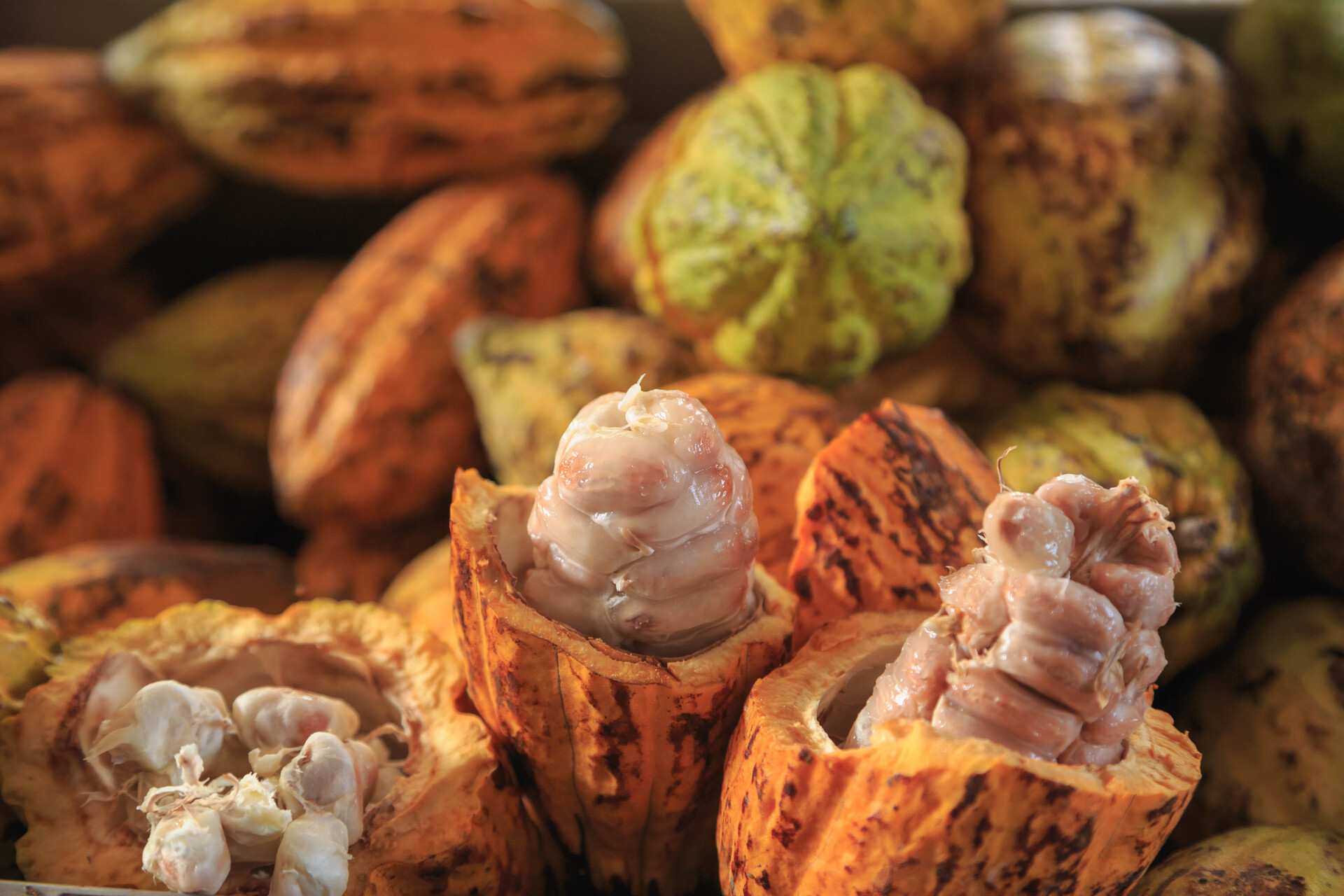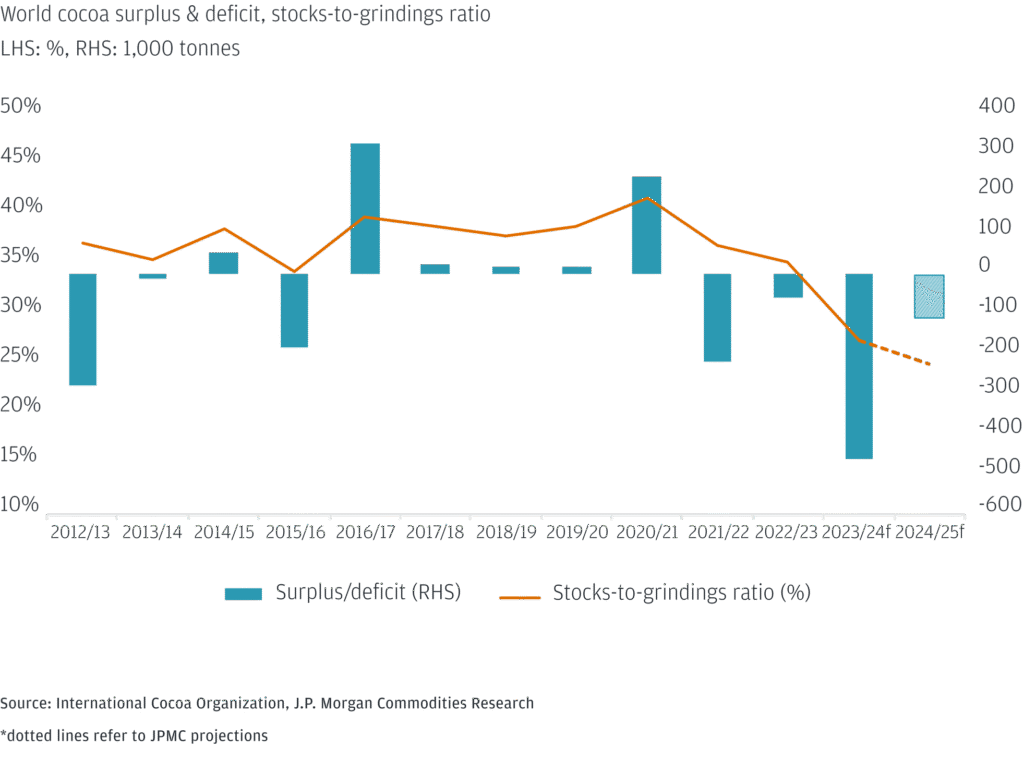
Cocoa prices have skyrocketed in recent months, reaching historical highs of nearly $10,000 per metric ton earlier this year. While prices have come down slightly since, they remain elevated due to persistent supply-side pressures. As we move into the 2024/25 crop season, where is the market headed?
Why are cocoa prices still rising?
The rise in cocoa prices is largely due to a global cocoa shortage, which has persisted since early 2024. Disease pressures, climate change and threatening weather have ravaged crops in West Africa, which contributes around 80% of the world’s cocoa output, and cocoa availability is at historical lows.
There are also deep-rooted structural issues at play, including chronic underinvestment in cocoa farms, despite recent increases in farm gate prices. Today, the crop is still largely cultivated by smallholder farmers, many of whom struggle to make a living income and lack the means to reinvest in their land — which translates to lower yields over time. “Cocoa is a market where the grower produces a very high-value good but receives a very low share of the actual value chain. As a result, replanting rates of diseased trees are low and West African yields have been more subject to weather impacts,” said Tracey Allen, an agricultural commodities strategist at J.P. Morgan.
Will cocoa prices continue to surge in 2025?
Despite hopes for a better crop in the 2024/25 season, cocoa prices look set to remain high in the medium term due to supply-side constraints and firm demand, before hovering around the $6,000/tonne mark once the market reaches a balance.
“The world cocoa balance for 2024/25 was looking more neutral some months ago until pod counts started to decline slightly across West Africa, and demand projections have also surprised to the upside. Cocoa grindings — a key measure of demand for cocoa — have been much firmer than expected through 2023/24, down just -4% year over year,” Allen said.
While world cocoa production is projected to increase by over 11% year over year to around 4.8 million tonnes, this is still below five-year average levels. A preliminary recovery in West African production, estimated at ~13% year over year, is expected amid reduced disease pressure and more accommodative seasonal conditions. Production across the rest of the world is also projected to rise as a result of strong price incentives.
“Overall, the world cocoa balance is shaping up to be in a modest deficit through 2024/25 of around -100,000 tonnes, versus the record deficit of around -460,000 tonnes in 2023/24,” Allen said. “The supply side of the balance will remain the most critical driver of the market amid a small recovery, alleviating to an extent the physical product constraints of 2023/24, but likely falling short of rebuilding depleted inventories. We therefore maintain our view of structurally higher cocoa prices for longer.”
The world cocoa balance is forecast to be in a modest deficit

What will this mean for consumers?
Chocolate brands are grappling with higher cocoa costs, and many are passing the burden onto consumers in the form of price hikes.
“Pricing has yet to pick up meaningfully, but we expect this to accelerate potentially to the low-teens in 2025,” said Celine Pannuti, head of European Staples & Beverages at J.P. Morgan. “We see the chocolate market set for inflation largely unprecedented in recent history.”
While demand for chocolate has been largely resilient, these price hikes could leave a bitter taste in consumers’ mouths, especially against a backdrop of ongoing inflation. “After three years of heightened price increases, there will be a careful balancing of further pricing against volumes risks, with a consumer that is increasingly inflation-fatigued,” said Edward Hockin, who covers Food and Consumer Ingredients at J.P. Morgan. “Already, recent data points to demand pressures building, even though significant incremental pricing has yet to land.”
This could, in turn, impact chocolate sales. While the chocolate confectionery market has experienced low elasticity of demand over 2022–24, supported by a post-pandemic recovery in gifting, increased impulse consumption and accelerated premiumization, these tailwinds could soon fade. “Overall, with the degree of pricing pass-through needed to offset costs inflation, and signs of some softening in consumer demand for chocolate, volumes and EBIT [earnings before interest and taxes] margins face risks in 2025,” Pannuti added.

